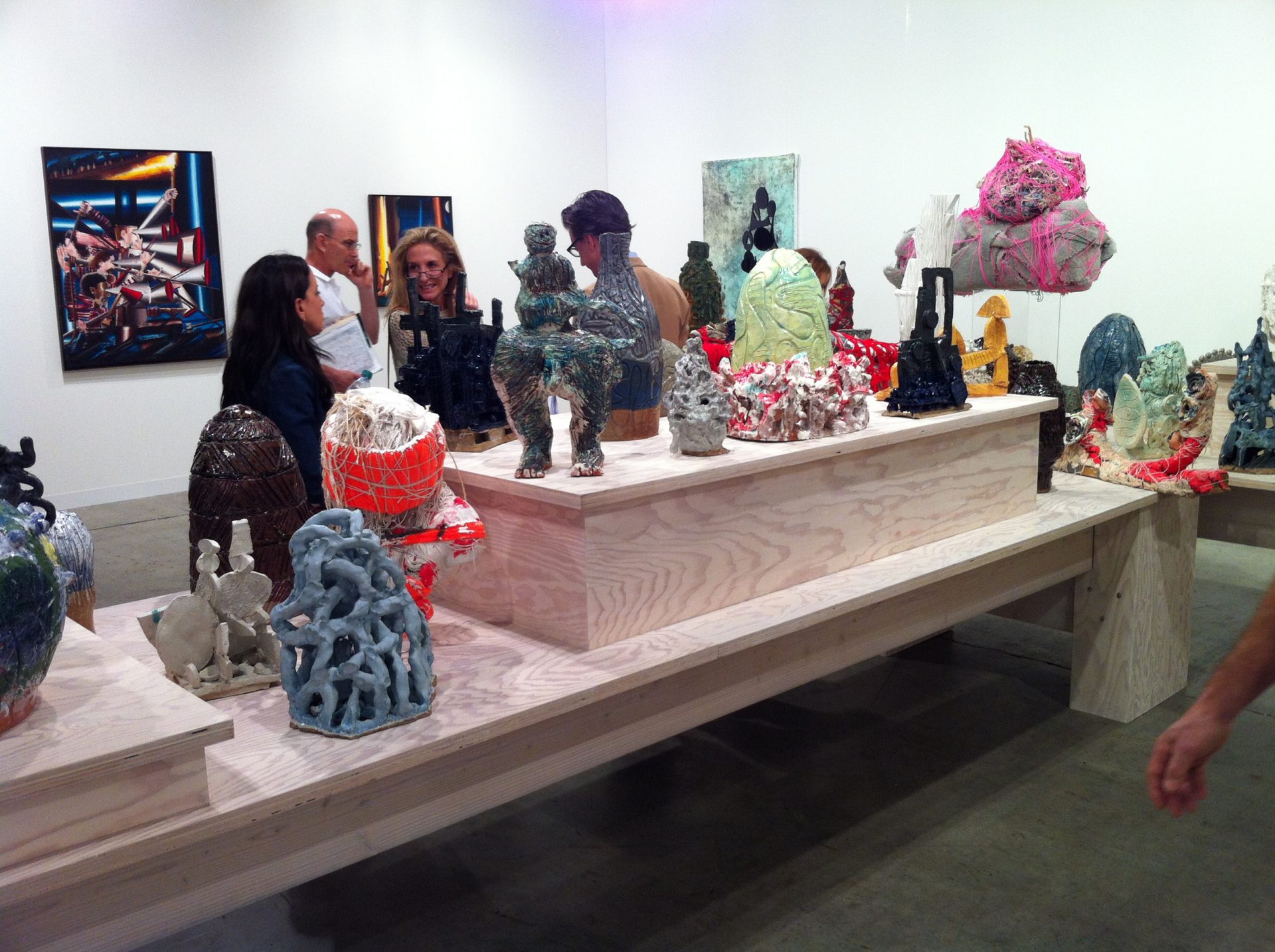“Altered States,” the Norton’s new show, messes with your head the minute you step into the museum. On the far wall of the building’s lobby a gargantuan, site-specific installation, Vibrating Strands of Energy, ripples along, 13 feet high and 56 feet long, protruding in places like a frieze on some ancient temple. But the movement and the depth are illusory. The brilliantly hued patterns are two-dimensional and fixed in place, digitally produced on strips of vinyl and applied to the museum’s walls. Only their play on the optic nerves generates the temporal and 3-D effects.
The work of Fort Lauderdale artist Jose Alvarez, the piece and its unsettling questions about the nature of visual reality make a fine introduction to the show, a display of four artists whose work concerns the interaction of art and consciousness. There is, of course, a sense in which every work of art alters the viewer’s state of mind. But “Altered States” presents work that in one way or another is about that alteration—about the means, the ends, and the experience of transformation.
Alvarez’s influences include the writings of Carlos Castaneda, the Peruvian-born anthropologist whose books chronicle his studies of “non-ordinary reality” under the tutelage of “Don Juan,” a north Mexican shaman. Castaneda’s writings have been variously challenged as fraudulent and enshrined as wisdom but their originality and brilliance are unquestioned.
Alvarez’s fascination with the pre-modern and the mythic is reflected in his use of organic, “non-ordinary” materials and his taste for elaborate, epic imagery. His acrylics and watercolors are strewn with porcupine quills, feathers, crystals and shimmering mica. Mixed-media fantasies like The Seer offer up a densely packed cosmic biology. We Came From the Stars and The Progress of Inspiration present super-saturated Miro-like dreamscapes. This is visionary stuff.

“We Came from the Stars”
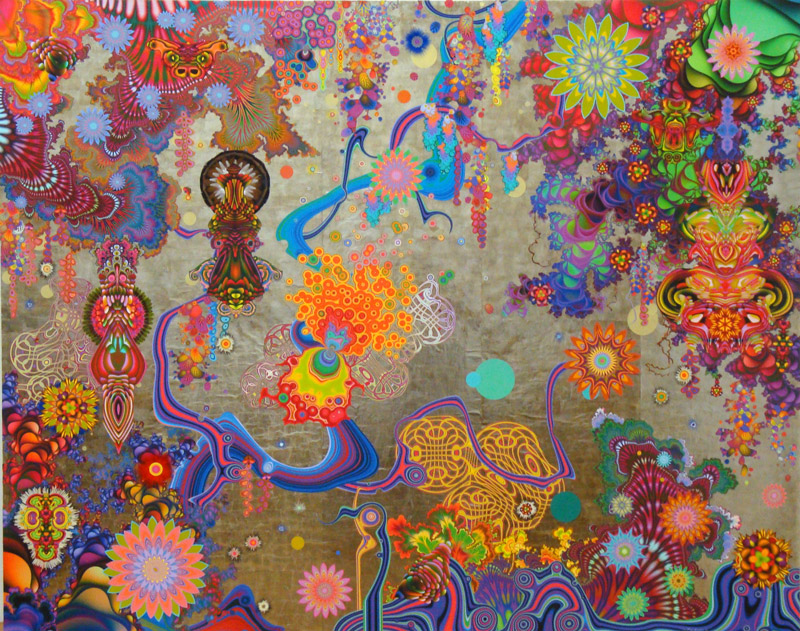
“The Progress Of Inspiration”
New York-based artist Leo Villareal’s work plays more directly on the central nervous system. His installation piece, Firmament II, consists of a single, large, darkened room, a set of specially designed “anti-gravity chairs,” and a ceiling array of several thousand, individually controlled LEDs that flash on and off in computer-generated random sequences. Just as the rapid progression of still images through a projector creates “motion pictures,” the brain’s perceptual lag in registering the lights’ actions fools the mind into seeing moving images on the room’s arch of artificial sky.
Stunning and hypnotic, the piece draws on Villareal’s interest in virtual reality and emergent behavior, the algorithms of his programming producing electronic mandalas one moment, kaleidoscopic night skies next, then fireworks displays and other, entirely unique forms. The restless patterns take on life that seems to flow through time.
The illusory dimensions of Alvarez’s and Villareal’s works invoke metaphysical dilemmas—is the image in the eye or in the brain? The two other artists in “Altered States” reference metaphysics more through metaphor and medium.
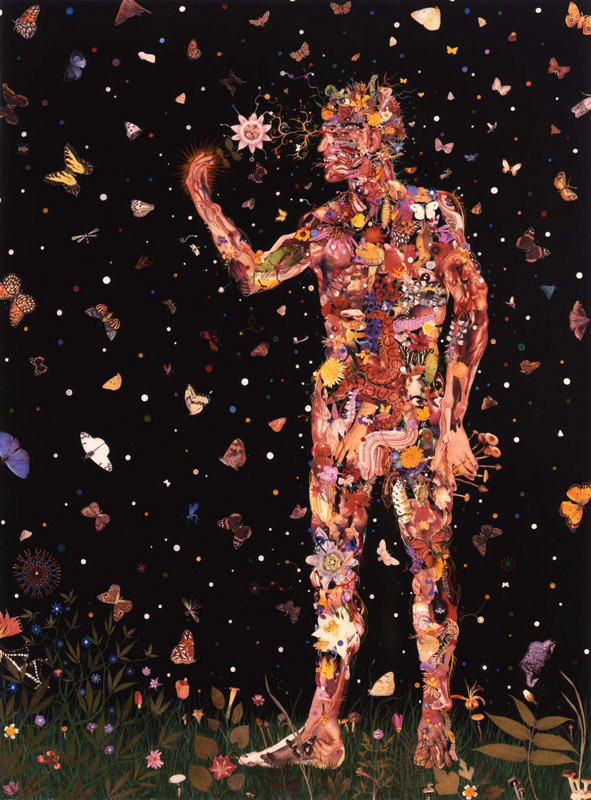
“Fungi and Flowers”
Fred Tomaselli is the most cerebral of the bunch, a collagist whose work incorporates visual puns, social commentary and psychological subversion. His initial notoriety arose through his use of literally mind-altering substances—marijuana leaves, pills, blotter acid—as an artistic medium, in work as elaborately patterned and enigmatic as the pages of an alchemist’s treatise. Brain With Flowers, for instance, is a photo collage of botanicals on a wood surface inlaid with pharmaceuticals in the shape of a human brain, the stem suggesting that the brain, too, may be a sort of flowering plant, blossoming in images.
Coming up through the Southern California punk rock scene of the late ’70s, Tomaselli no doubt utilized such substances recreationally and for self-exploration. Later, he says, he “wanted to see if I could effect perception through the eyelid instead of the bloodstream.” While his materials no longer include psychoactives–drawing chiefly instead on an immense collection of magazine illustrations and photos–the utopian impulse of that short-lived counterculture still informs his work.
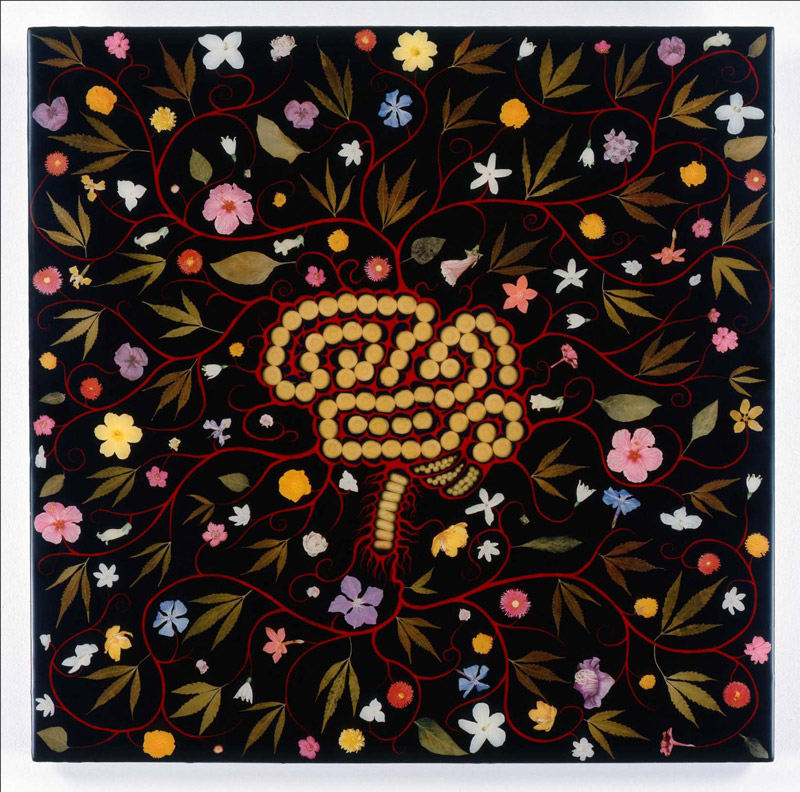
“Brain with Flowers”
Big Stack, at the Norton, is a case in point. A collage of photos of what Tomaselli calls “the found sculpture of rock concerts,” the speakers and amps form a totem that towers to the sky, reaching through the stars. Music has been a path to transcendence in many cultures, why not rock and roll in ours?
The legendary Japanese artist Yayoi Kusama serves as a forebear and eminence grise to the show, which includes a quick survey of fifty years of her work. An aesthetic astronaut of inner space, Kusama’s voyages at times have brought her low. There is a haunted quality to her work, the obsessively detailed surfaces, like neural spider webs, displaying a fevered intensity within a Zen-like void. This is calligraphy as psychic high-wire act, pointillism as paranoia.

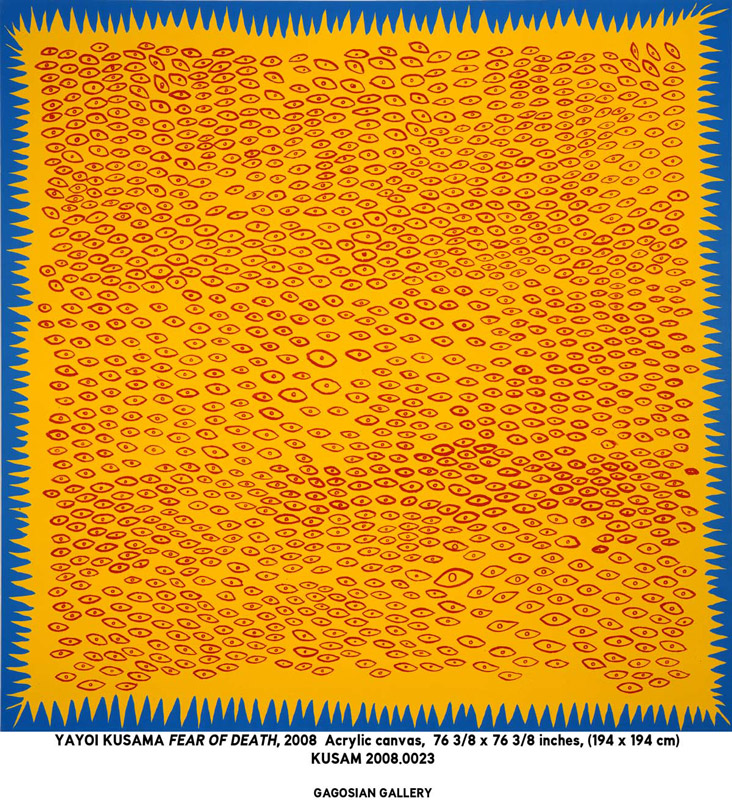
Norton curator Cheryl Brutvan considered including one of Kusama’s famous “infinity rooms” in the show but felt the gallery’s space would not properly accommodate it. The rooms–installation pieces with mirrored walls enclosing spaces filled with candy colored balloons, shimmering lights, or phallic anemones–express Kusama’s more exuberant side. But even they have an anxious edge. Altered states are not necessarily euphoric, but intense aesthetic expression is always a joy.
Altered States: Jose Alvarez, Yayoi Kusama, Fred Tomaselli and Leo Villareal
April 2 – July 17, 2011
Norton Museum of Art
1451 S. Olive Avenue, West Palm Beach
Phone: 561.832.5196
www.norton.org
